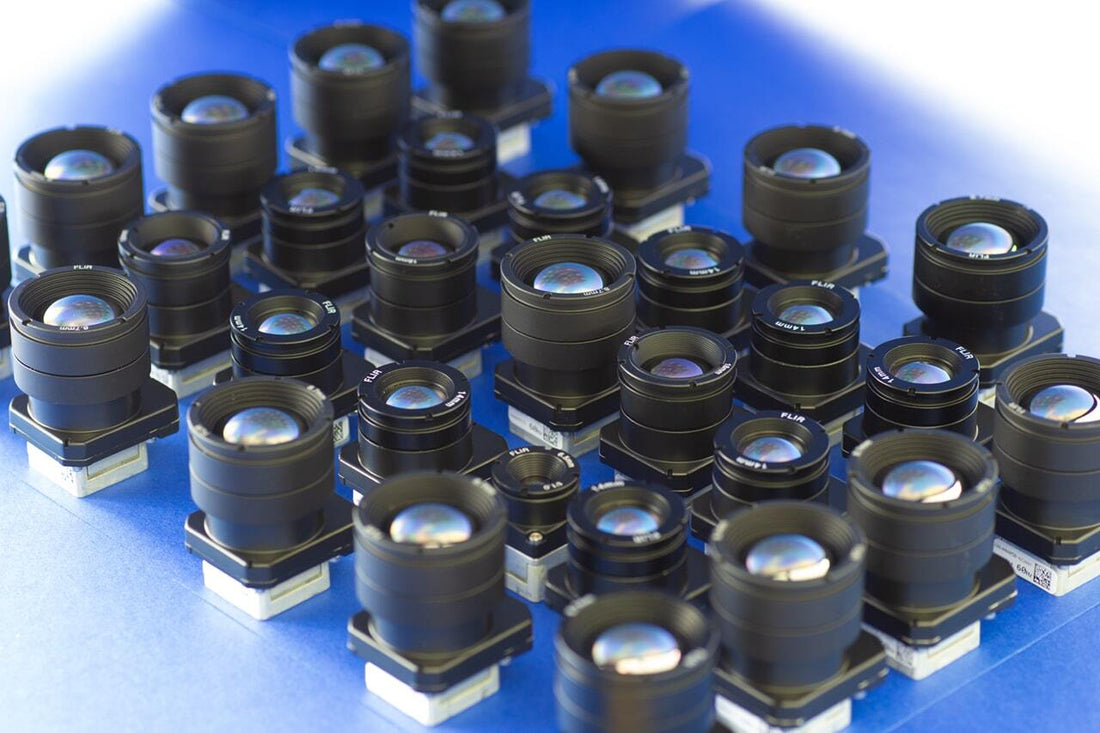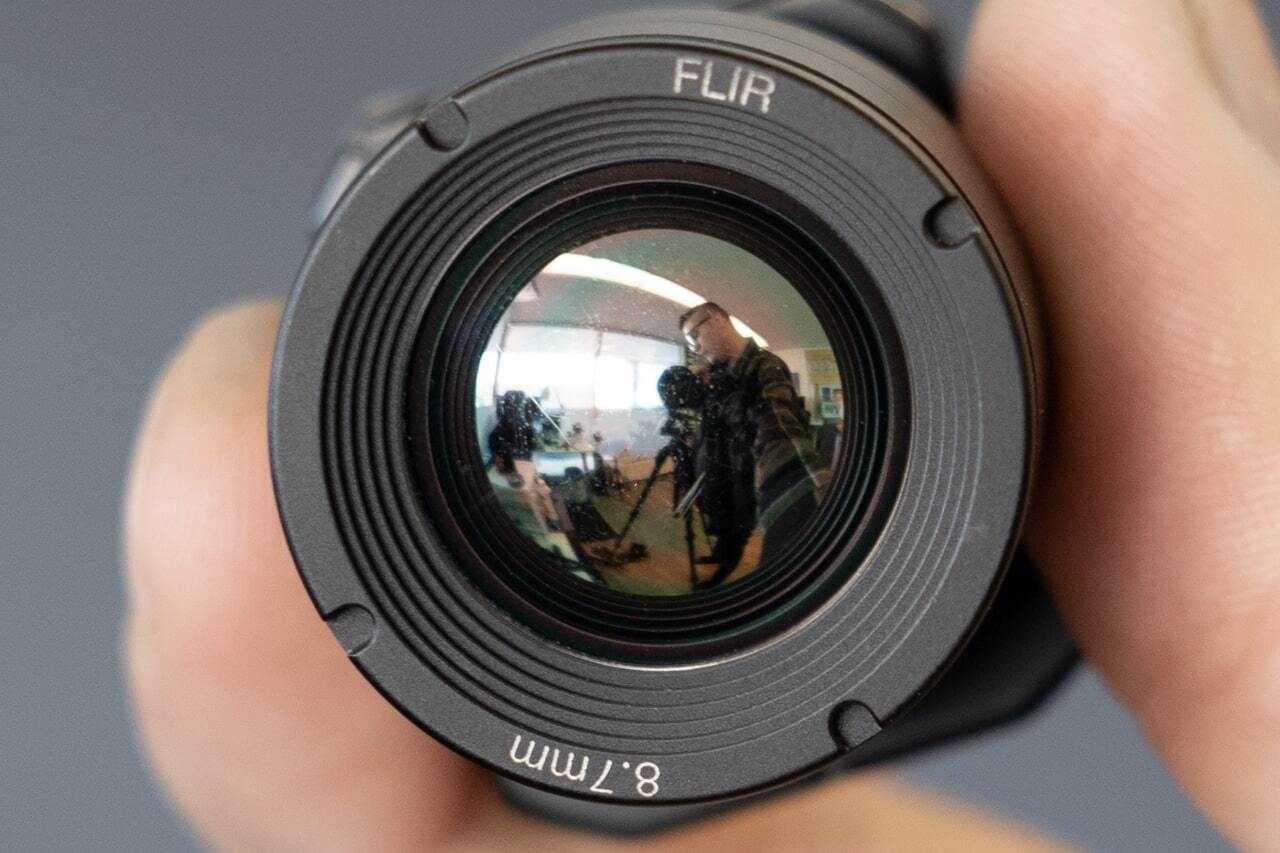
Teledyne FLIR Boson Cameras - Choosing the Right Thermal Camera for You
If you’ve been looking for a thermal camera module that can go with you anywhere, whether you’re fighting fires in the mountains or running unmanned aircrafts in the valley, setting up a security system at home or working with automotive development kits at work, the Teledyne FLIR Boson Camera is perfect for your project.
GroupGets offers six variations of the FLIR Boson: the Boson 320 and Boson 640, the Radiometric Boson 320 and Radiometric Boson 640, and the Boson+ 320 and Boson+ 640. Not only that, but each variation has different grades and viewing angles to choose from, making the act of picking the right one slightly daunting.
Fear not, for I have delved down the rabbit hole that is Teledyne FLIR Boson to be able to help you decide. I’ll go over the details that will help you pick, including the Bosons’ temperature ranges, their thermal sensitivity, lens angles, pixels, and more to help you find the right one for you.

When you’re looking into thermal imaging, one of the things you want to look for is the range of temperatures the camera module will pick up. The FLIR Bosons are available in two levels, the FLIR Boson, and the FLIR Boson+, and each level has a different temperature range. The FLIR Bosons have a scene temperature range from 140°C (high gain) to 500°C (low gain), while the FLIR Boson+ cameras have a temperature range from 150°C (high gain) up to 350°C (low gain).
What is gain? Gain (AGC), in the context of digital cameras such as the Boson, is the amplification of the signal generated by the camera sensor. It's important to emphasize that this amplification affects the entire signal, encompassing any concurrent background noise. Lower gain is preferred as it keeps the noise in the image down. High gain in regards to Boson helps to amplify the less powerful signal produced by lower temperatures, while low gain is better for higher temperatures since high temperatures produce a stronger signal for the camera to see.
Ideally, you want a thermal camera that can pick up a wide range of temperatures, so that you miss nothing in your image. Therefore, besides the temperature range, you want to look at the thermal sensitivity. Thermal sensitivity is the ability of a thermal device to distinguish between temperature differences. In thermal devices, this is measured in milliKelvins (mK). The lower the number, the higher the sensitivity of the camera - meaning the core (in this case the FLIR Boson core) is able to differentiate between smaller temp ranges and will render a more detailed image.
For those browsing for thermal cameras, you might have seen the abbreviation NeDT, and if you aren’t sure exactly what that means you aren’t alone. It stands for Noise Equivalent Differential Temperature, which can be used to qualify certain midwave (MWIR) and longwave (LWIR) infrared cameras. It represents the minimum (approximate) temperature difference which the camera can resolve, which translates in layman's terms to thermal sensitivity. If you want a more in-depth description of how NeDT is measured, you can find FLIR’s description here.

(SIRAS Image Credit: Teledyne FLIR)
The higher the thermal sensitivity of the camera, the more useful it will be for cutting through the thick smoke of a mountain fire, flying your drone through dense fog, and any other adverse conditions you might run into.
The Teledyne FLIR Boson cameras are available in three different grades: Consumer, Professional, and Industrial , which dictates the thermal sensitivity - Consumer ≤ 60mK, Professional ≤ 50mK, and Industrial ≤ 40mK.
The Teledyne FLIR Boson+ cameras come in two grades: Professional, and Industrial, which represent an industry-leading ≤ 30mK and ≤ 20mK, respectively. They have an upgraded automatic gain control (AGC) with improved and deeper blacks, and a significantly decreased latency of <6ms. Latency is the time it takes for the raw data to be taken in and processed, you can compare this to the latency of the FLIR Boson cameras at < 25ms (ms in this usage stands for milliseconds).
What does all that mean? Well to try and sum it up: with everything else equal, a camera with >30mk thermal sensitivity will resolve data roughly 30% sharper, clearer, and with less noise than a camera module with >50mK thermal sensitivity. So if that level of detail is important for your project, or you plan on using your thermal camera in a range of conditions, you will want to aim for a higher sensitivity rating.

Now let’s get to the multitude of lens angles available to you. Most FLIR Bosons come in a range from 5.5° to 95°, meaning we can find the perfect viewing angle for you. If you’re going to be looking at something far away, or something very small (in terms of distance - not in the way you would use a macro lens) you’ll want to go with a narrower lens angle.
You’ll want to pick a wider angle if you want to see more of something, without being farther away. You are essentially expanding your field of view (FOV) to see the “big picture.” If you were scanning a building for heat leaks, you can scan larger areas at a time, which means you can identify areas of concern all at once and come back to them later.
GroupGets’s lead engineer, Griffin Covert, gave me a fun fact about the 56° lens; he said “because the viewing angle is approximately one radian, the distance and the size of an object are equal. If you have an object that is 1 meter away and 1 meter wide, it will take up the entire FOV. So if you have an object that is 10 meters away and 1 meter wide, it will take up 10% of the horizontal FOV.” He also cued me that the Teledyne FLIR Lepton 3.5 is the same type of uncooled 56° lens - which gives some substance to its popularity.

What was that about an uncooled lens? There are cooled and uncooled sensors, with the FLIR Bosons having a 12 µm uncooled detector. Cooled sensors, at least modern ones, have an imaging sensor that is integrated with a cryocooler, which drastically lowers the sensor temperature. This lowered temperature reduces thermally-induced noise from the scene being resolved, which can help you see minute temperature differences.
So why pick uncooled? Yes, cooled thermal sensors are cool - pun intended - they give great image quality and are perfect for high speed applications, but they consume a large amount of energy, and come with quite the elevated price tag. Uncooled thermal camera modules consume less energy and cost far less, which make them more accessible for everyday people.
Teledyne FLIR has a more in-depth explanation about cooled versus uncooled sensors on their website.
We can’t forget to talk about pixels and resolution and how they correspond. The more pixels a thermal camera module has, the higher its resolution - the higher the resolution, the more detail your image will have. The Boson 320, Radiometric Boson 320, and Boson+ 320 all have a resolution of 320 x 256, which means that it has 81,920 pixels. The Boson 640, Radiometric Boson 640, and Boson+ 640 all have a resolution of 640 x 512, which means it has 327,680 pixels.
Each pixel detects the apparent temperature measurement of the area it's pointed at. Pixel size matters, and for once, smaller is better. Pixel size is measured in microns (μm), sometimes called pixel pitch, the pixel size is the distance between the centers of two pixels of a microbolometer (a microbolometer is a specific bolometer used as a detector in thermal cameras). The smaller the pixel pitch, the more detail you will see in your image.
RadiometryThe Teledyne FLIR Radiometric Bosons offer absolute temperature measurement. Right now the radiometric option is only available in the FLIR Boson family and select models in the Boson+ group, with more to arrive soon.
| Boson | Boson + | |
|---|---|---|
| Resolution | 320 - QVGA: 320 × 256 640 - VGA: 640 × 512 |
|
| Temperature Range | High Gain: <140 °C Low Gain: <500 °C |
High Gain: up to 150 °C Low Gain: up to 350 °C |
| Thermal Sensitivity |
Consumer: ≤ 60mK |
Professional: ≤ 30mK |
| Pixel Size | 12 μm | |
| Radiometry | The Teledyne FLIR Radiometric Bosons offer absolute temperature measurement. Right now the radiometric option is only available in the FLIR Boson family and select models in the Boson+ group, with more to arrive soon. | |
With all the data laid out it’s easier to see the differences, but what does it all mean? I’ll be honest with you, especially if you made it this far - the Boson+ will handle extreme conditions better than the Boson, and will give you a crisper, more detailed image. However, that does not mean the FLIR Boson is not an exceptional camera - it is - it just means the Boson+ is better for some applications.
https://www.youtube.com/watch?v=X6qbC2sLO8M&t=21s
In this video of an outdoor park, you can see the difference between the Boson and the Boson+ thermal cameras, with Boson on the left, and Boson+ on the right. You can see that the image rendered by the Boson is slightly lighter than that of the Boson+ this is because of the heightened thermal sensitivity of the Boson+ which makes it more able to distinguish the difference between temperatures.
No matter which model, grade, or lens angle you decide on, you can rest assured that you’re going to be using a high-quality, and in some cases, industry-leading thermal camera built with all of your projects in mind. Look no further, Teledyne FLIR has what you need.

(LOFTID/IHAD Image Credit: NASA)
Many companies around the world use Teledyne FLIR Boson cameras, but NASA is the first to take the Boson out of our atmosphere. According to the article published by FLIR:
“NASA chose the Boson as it fits many of its stringent engineering requirements already, including the need for a small, lightweight, passively cooled infrared camera with 640 x 512 thermal resolution. The platform also lends itself well to customization and repackaging for surviving the rigors of space travel.”
NASA designed its own packaging for the FLIR Boson that would allow it to withstand intense vibration during takeoff and landing, the vacuum of space, and the extreme temperatures reached during re-entry.
I knew the Bosons were cool, but now they are out of this world!
